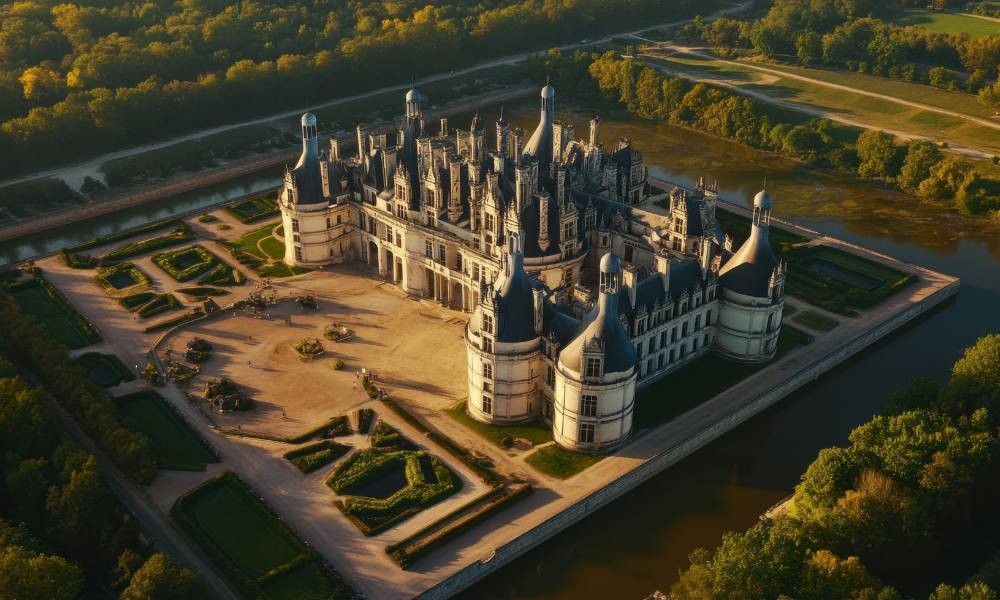The Loire Valley castles should definitely be on your travel radar if you’re looking for a blend of history, culture, and stunning architecture. I had the opportunity to visit these incredible sites, and each château offered a unique experience.
During my visit, I explored Château de Chambord, Château d’Amboise, Clos Lucé, and more, each one showcasing a different aspect of France’s heritage—whether it’s architectural grandeur, royal significance, or artistic influence.
If you’re looking for a destination filled with rich history and beautiful scenery, luxury vacation rentals in the Loire Valley offer a comfortable place to stay, allowing you to relax after your visits.
The Loire Valley is renowned for its castles, each offering a glimpse into French history and a blend of French and Italian architectural styles. A tour of the Loire Valley castles provides a fascinating look into France’s history and royal heritage. Each château offers something different, whether it’s impressive architecture, royal connections, or ties to famous figures.
For travelers exploring France, a Mont Saint Michel night tour could be an ideal complement to a Loire Valley castle tour, offering a unique perspective on two of the country’s most iconic destinations.
The castle’s architecture was a mesmerizing blend of French Gothic and Italian Renaissance styles. These castles highlight the influence of French royalty and provide insights into the region’s past. Here’s a closer look at each one:
1. Château de Chambord
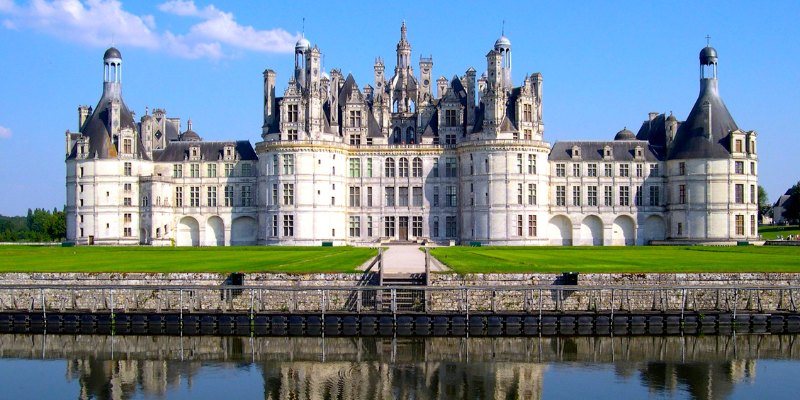
My journey began at Château de Chambord, a grand masterpiece of French Renaissance architecture. Commissioned by King Francis I in the 16th century, this castle is a true marvel of design and ambition.
Highlights of Château de Chambord
- Blending Styles: Famous for its Renaissance architecture, the castle is an exquisite mix of French Gothic and Italian Renaissance influences.
- Royal Emblem: The salamander, Francis I’s symbol of resilience and power, appears over 800 times throughout the castle.
- Ingenious Staircase: The double-helix staircase allows two people to ascend or descend simultaneously without crossing paths—a marvel of both form and function.
- Artistic Courtyard: Panoramic views from the courtyard reveal intricate sculptures and spires inspired by Italian craftsmanship.
Château de Chambord, with its sprawling grounds and stunning rooftop views, offers a glimpse into the grandeur and artistry of French royalty.
2. Château d’Amboise
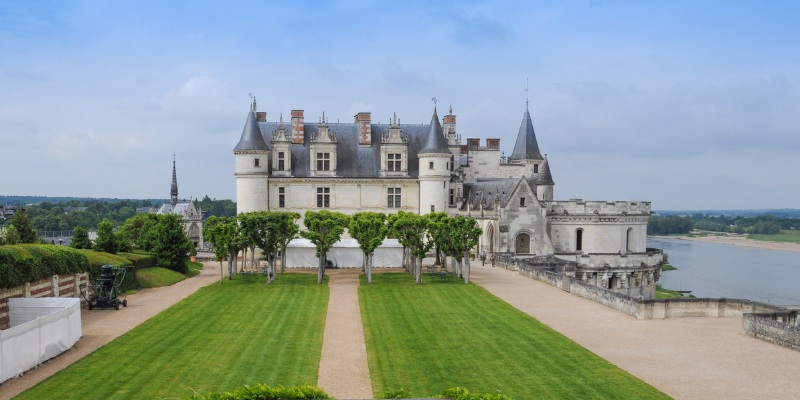
Next, I visited the delightful Château Royal d’Amboise in the picturesque town of Amboise. Smaller in scale but brimming with historical significance, this castle was once home to Leonardo da Vinci during the final years of his life.
Highlights of Château d’Amboise
- Leonardo’s Legacy: Invited by Francis I, Da Vinci spent his last years here, bringing iconic works like the Mona Lisa to France.
- Innovative Workshop: Exploring Da Vinci’s workspace and seeing life-size models of his inventions, from a catapult to a hygienic bridge, was fascinating.
- Historic Chapel: The castle’s chapel houses Leonardo da Vinci’s final resting place.
- Intimate Atmosphere: Unlike Chambord, Amboise felt more like a royal home, surrounded by lush gardens and offering stunning views of the Loire River.
Château d’Amboise left me captivated by its artistic heritage and royal history, making it an unforgettable stop on my Loire Valley itinerary. While each castle offers unique features, travelers might also consider venturing south to explore some of the most beautiful French Riviera towns, known for their coastal landscapes and historical sites.
3. Clos Lucé
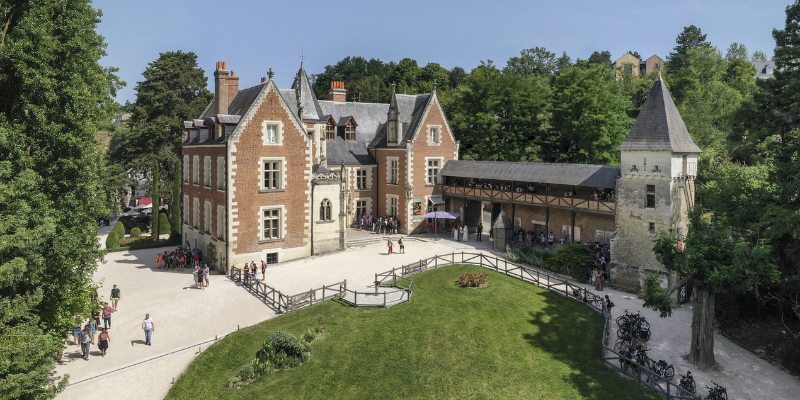
My next stop was Clos Lucé, a charming estate where Leonardo da Vinci spent his last years under the patronage of Francis I. Walking through this residence felt like stepping into the world of a true genius.
Highlights of Clos Lucé
- Leonardo’s Personal Space: Visitors can explore his bedroom and the replica of his workshop, bringing his daily life into vivid detail.
- Innovative Legacy: The estate showcases life-size models of Leonardo’s inventions, celebrating his work as an artist, engineer, and botanist.
- Immersive Experience: Each room highlights his contributions to art and science, making it a must-visit for history and innovation enthusiasts.
Clos Lucé is more than just a historical site; it’s a celebration of Da Vinci’s brilliance and his enduring impact on the world.
4. Château de Chenonceau
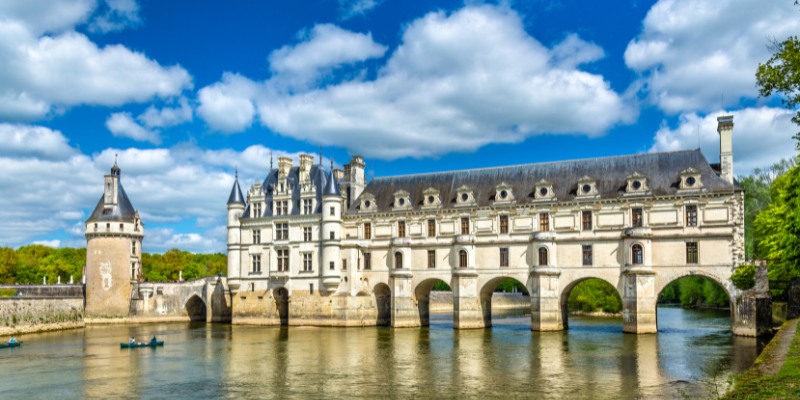
My final destination was the enchanting Château de Chenonceau, often called the “Ladies’ Castle” for its deep connection to influential women throughout history.
Highlights of Château de Chenonceau
- Architectural Masterpiece: Known for its arched gallery over the Cher River, the château is a symbol of elegance and harmony.
- Feminine Influence: Women like Diane de Poitiers and Catherine de’ Medici shaped the castle’s design, from its opulent interiors to its stunning gardens.
- Historical Significance: During World War I, the gallery served as a hospital, and during World War II, it became a passage between occupied and free France.
- Lavish Gardens: The meticulously designed gardens reflect Renaissance elegance and personal touches from their private owners.
Château de Chenonceau combines beauty, history, and resilience, leaving every visitor enchanted by its romantic and storied past.
Cultural and Historical Insights from the Loire Valley
Visiting these castles gave me a deeper appreciation for the cultural and historical tapestry of the Loire Valley:
- Artistic Blend: The castles reflect a mix of French grandeur and Italian artistry, showcasing a unique fusion of design philosophies.
- Markers of Power: Each castle is a symbol of royal ambition, political statements, and wartime resilience.
- Living History: Details like Renaissance-era graffiti and the logistical challenge of royal courts moving—including furniture—every two weeks reveal the practicalities of life in those times.
Tips for Exploring Loire Valley Castles
To make the most of your journey through this iconic region, a little preparation goes a long way. Whether you’re visiting for the breathtaking architecture, the lush gardens, or the fascinating tales of royalty and revolution, these tips will help you enjoy a seamless and unforgettable experience:
- Hire a Guide: A local guide like Valentine enhanced my experience with in-depth insights into the region’s architecture and history.
- Plan Travel Wisely: The Loire Valley is about an hour from Paris by train, with some additional time needed for local transport.
- Dress for Comfort: Exploring castles and gardens means wearing comfortable footwear and packing for variable weather.
- Enjoy the Cuisine: Sampling local delicacies at nearby cafés and restaurants added a delicious layer to my journey.
- Stay in Style: Consider vacation rentals in Loire Valley castles to elevate your experience. Staying in a historic setting allows you to fully embrace the charm of the region.
Conclusion
The castles in the Loire Valley are much more than historical sites; they are key to understanding France’s royal history and architectural innovation. Visiting Château de Chambord, Château de Chenonceau, and others offers a deeper appreciation of French heritage.
I hope you find the reason why Loire Valley Castles should be on your travel radar. If you’re looking for a destination that combines rich history, fascinating stories, and beautiful landscapes, the Loire Valley is an essential stop. This region’s castles offer a real insight into the past and should be a must-visit for anyone traveling through France.
FAQs
The most famous castles in the Loire Valley include Château de Chambord, Château d’Amboise, Clos Lucé, and Château de Chenonceau. Each one has unique historical and architectural significance, from royal heritage to artistic connections with Leonardo da Vinci.
A visit to each castle can take anywhere from 1 to 2 hours. A complete tour of the Loire Valley, including several castles, may take 3 to 4 days to appreciate the history and beauty of the region fully.
The best time to visit is during the spring and fall when the weather is mild, and the crowds are smaller. Summer is also a popular time, though it can be more crowded.
While it’s not mandatory, hiring a local guide, like the one I had, can greatly enhance your experience. Guides provide in-depth historical insights, and fascinating details, and can reveal hidden gems that you might otherwise miss.
Yes, the Loire Valley is about an hour by train from Paris, and local transport options like buses or taxis are available to get from one castle to another. However, renting a car may offer more flexibility in exploring the region.
Many of the Loire Valley castles are wheelchair accessible, though some may have limitations due to their historical design and terrain. It’s recommended to check with each castle in advance to ensure full accessibility for visitors with mobility issues.
Photography policies vary by castle. In most cases, you can take photos in the outdoor areas and gardens, but inside the castles, there may be restrictions, especially in areas with valuable art or artifacts. Always check the rules when you arrive.
More Related Blogs From Travel Experiences
Surprising Things About Historical Landmarks in New Jersey
Things to Do in Atlanta: Your Complete Guide
Full List of Things to Do in Toronto: Simple, Stress-Free Picks!
Mark Smith
Introducing Mark Smith, a wanderlust-fueled travel author on a mission to inspire others to embrace exploration and discovery. From the colorful markets of Marrakech to the tranquil rice paddies of Ubud, Mark Smith’s vibrant narratives capture the essence of each destination, weaving tales of culture, cuisine, and unforgettable experiences. Join Mark Smith on his quest to uncover the beauty of our world, one adventure at a time.
